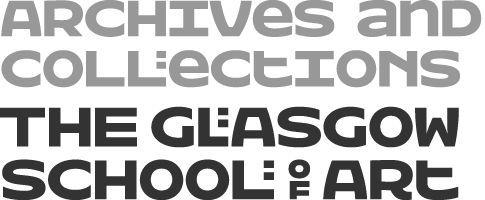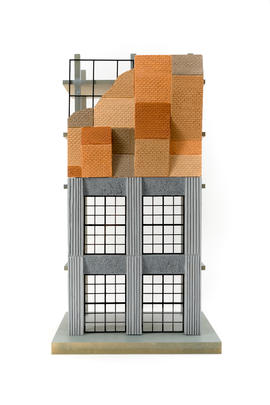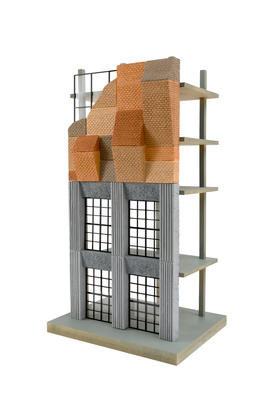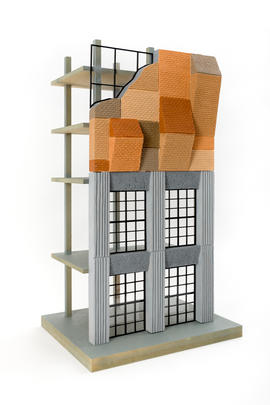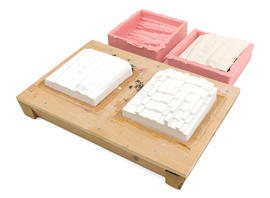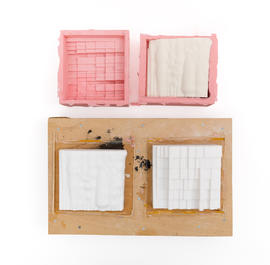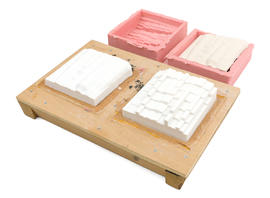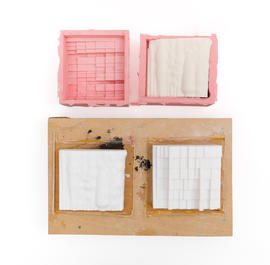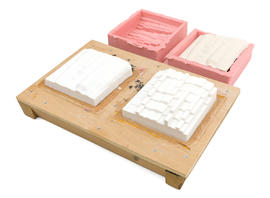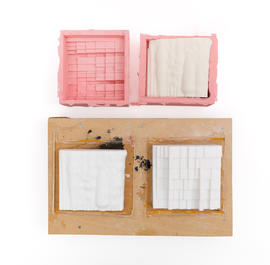3D Prints on plywood, pine and cement base made during the prototyping process of mycelium tiles for use in the domestic interior. Created during Stage 3 of Master of Design in Interior Design. from Stage 3 of Master of Design in Interior Design project titled "Digital Design Craft Fabrication".
Project Synopsis: Recognising the increasing uptake of domestic craft activities seen during the COVID pandemic lockdowns, and the need driven by climate change to reconsider the materials we use and our relationships to the objects we surround ourselves with, this project proposes a series of interior objects to be crafted in and for the domestic environment, using waste material and other environmentally responsible materials.
Craft within two contrasting areas of Scotland (Glasgow and Argyll) formed the basis for the project research, with interviews and observation of craft practitioners working in these areas conducted. Both analogue and digital methods were employed to process, manipulate and experiment with the data collected, and through this, new interior objects of domestic craft have been proposed. The forms of the proposed objects speak directly of the processes through which they have developed, highlighting the wider environmental connections of the objects.
Hand crafting objects for your own domestic environment results in objects valued on many levels. From valuing simply for the enjoyment of making or the ability to create something useful, to valuing these crafted objects’ ability to store memories or to express self-identity through their creation and display. In creating interior objects which are highly valued, their future responsible use is secured.
Artefact description: 3D Prints which are examples of forms created through extraction and manipulation of data from a soundscape of furniture designer/maker Martin Campbell working in his workshop in the Southside of Glasgow. Scripts written within the visual scripting language Grasshopper were used with a 2D visual representation (spectral frequency image) of the furniture making soundscape as an input to the scripts. This input data was then used to drive the creation of 3D forms which were 3D printed.
The 3D prints are fixed to a plywood, pine and cement base (a leftover material exploration from a previous project) to allow silicone moulds to be taken from the 3D prints. The moulds were used during the project to create a mycelium tile grown on waste wood shavings taken from Martin Campbell’s workshop. This prototype is recorded within the digital project journal, but unfortunately decayed quickly. A jesmonite 3D Printed 'tile' has been created in its place (NMC/2000D).
The mycelium tile was proposed for use as an internal window shuttering system. Mycelium, which is the root system of fungus, is currently a popular bio-material being explored within the design and construction industries as an environmentally responsible alternative to many existing materials such as leather. The mycelium can be grown on waste materials such as wood shavings, or as was also suggested in this project, domestic food waste such as coffee grounds or vegetable peelings. The mycelium can be grown in moulds, with the material baked once removed from the mould to stop further growth.
